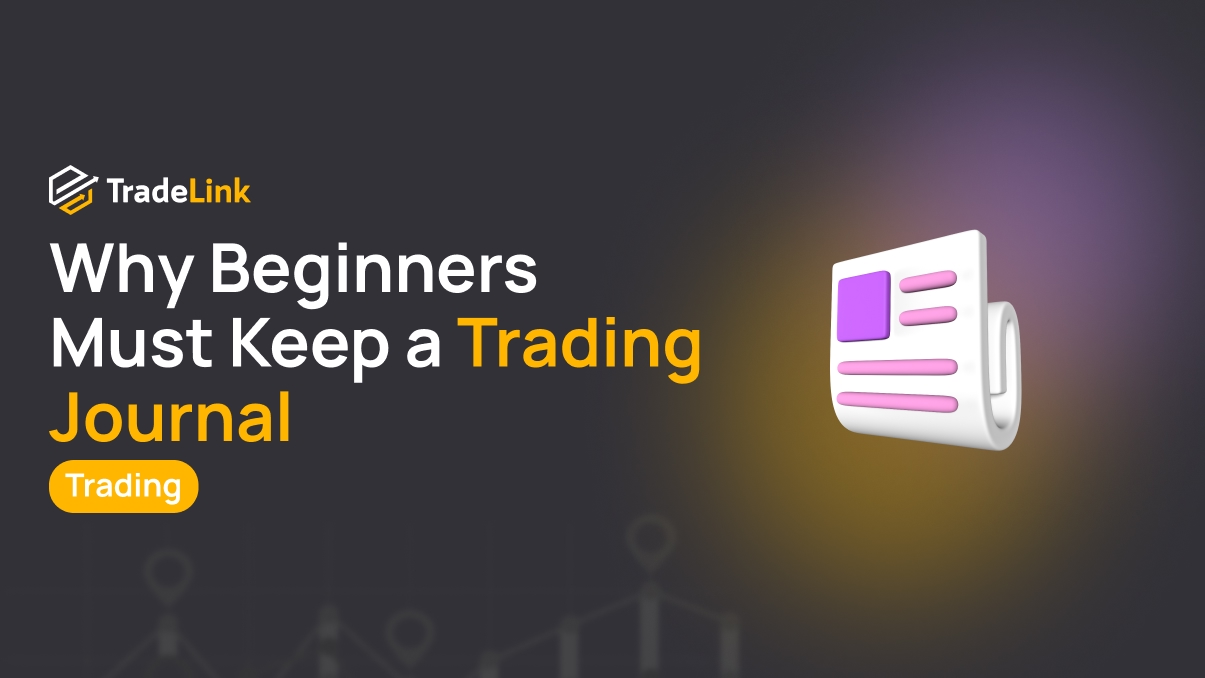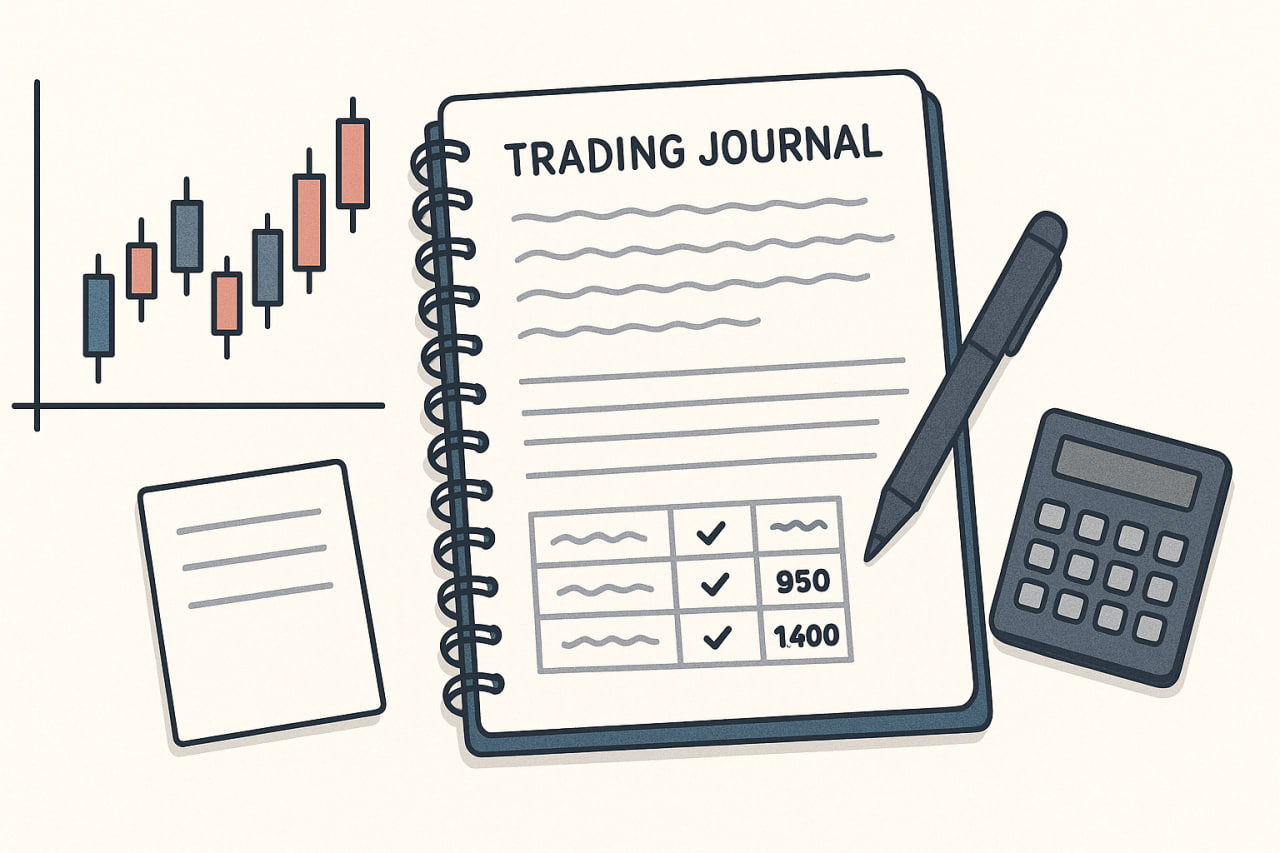Why Beginners Must Keep a Trading Journal (and How to Start the Right Way)

Contents
- Introduction
- What Is a Trading Journal
- Error Analysis and Strategy Improvement
- How to Start Keeping a Trading Journal
- Examples and Best Practices
- Conclusion
Introduction
Every trader begins with their first trades, and it is at this stage that habits are formed, which may later help or hinder. A trading journal is a practical tool that changes the approach to the market. It allows one to record results, identify strengths and weaknesses, and gradually develop discipline. This helps make trading more systematic and conscious.
What Is a Trading Journal

A trading journal is a trader’s personal database. It records the date and time of a trade, entry and exit prices, position size, result, as well as thoughts and reasons for decisions. Such a tool helps analyse one’s own behaviour in various market conditions, not just presenting dry statistics.
Why a Trader Should Keep Records
Regular journaling provides several advantages:
-
Trade analysis. Records show which actions led to results and which turned out to be mistakes.
-
Error detection and correction. The journal helps identify recurring mistakes and adjust them.
-
Emotional control. Recording thoughts and moods helps to understand how psychology influences decisions.
-
Discipline development. The habit of recording trades instils consistency and adherence to the plan.
-
Strategy formation. Based on accumulated data, a system is built that is adapted to the specific trader.
-
Confidence building. Visible improvements reduce stress and strengthen confidence in one’s actions.
For beginners in particular, a journal becomes a valuable tool, as it helps reduce randomness in trading and accelerates the development of a systematic approach.
Error Analysis and Strategy Improvement
Mistakes are inevitable, but it is essential to be aware of them. The journal helps identify patterns, such as recurring losses at certain times or under similar circumstances. Based on this, one can adjust a strategy and gradually develop an individual working style. This approach corresponds to the practice of trading performance review used in professional funds.
Trader Psychology and Self-Control
Emotions are one of the most common problems for beginners. Fear or greed can lead to hasty decisions. By recording not only trade parameters but also emotions, a trader becomes aware of their impact on results. This helps develop a calm and balanced approach, reduces stress levels, and strengthens confidence.
How to Start Keeping a Trading Journal

The first step is to define the goal: controlling emotions, finding effective strategies, or reducing risks. Next, choose a convenient format, such as a notebook, a spreadsheet, or a specialised application. It is recommended that the template include date, instrument, entry and exit prices, stop-loss, result, and comments. Adding a field for brief conclusions is useful, allowing one to revisit the analysis regularly.
What to Include in Records
For a trading journal to be most effective, it is essential to record not only numbers but also the context of the trade. This approach helps to see the whole picture, encompassing technical parameters, mindset, results, and conclusions. Below is an example of a basic structure:
Parameter | What to Record | Example Entry |
Date and Time | The day and exact time the position opened | 12.08.2025, 14:35 |
Instrument | Currency pair, stock, or cryptocurrency | EUR/USD or BTC/USDT |
Entry/Exit Price | Actual trade values | Entry 1.0950, Exit 1.1015 |
Position Size | Volume in lots or coins | 0.2 lots or 0.5 BTC |
Stop-Loss and Target | Levels set before opening the trade | SL 1.0920, TP 1.1020 |
Emotions | State during the trade | Anxiety 3/5, Confidence 4/5 |
Result | Outcome in money and percentage | +$70 (+1.5% of deposit) |
Comment | Trade reason or brief conclusion | Entry at the support level |
This format makes entries convenient for analysis and helps quickly identify key mistakes and successful decisions.
Journal Formats
The format should be chosen based on convenience and regularity of use.
Notebook (paper journal)
-
Pros: always at hand, no distractions.
-
Cons: no automatic calculations, complex to analyse old trades.
-
Suitable for the initial stage, when simplicity and building the habit of discipline are essential.
Spreadsheet (Excel or Google Sheets)
-
Pros: filters, formulas, performance charts, and access from any device.
-
Cons: manual input requires accuracy.
-
A universal option for Forex, cryptocurrencies, and stocks.
Specialised Applications
-
Pros: trade import, metrics, quick reports, and emotion notes.
-
Cons: setup and subscription, dependence on the ecosystem.
-
Optimal for active trading and complex strategies.
Tips for Effective Use
To ensure the journal truly helps:
-
Make entries regularly, ideally right after closing a trade.
-
Record emotions honestly — they often have a key impact on the outcome.
-
Conduct weekly and monthly analyses to identify both short-term mistakes and long-term trends.
Examples and Best Practices

Experience shows that successful traders use a journal as a tool for systematic learning:
-
Some record trades, along with chart screenshots, to provide context.
-
Others note news or market events that influenced their decisions.
-
A widespread practice is to separate trades into systematic and emotional ones: comparing these groups clearly shows the role of discipline.
Today, such approaches can be further enhanced with digital tools: real-time portfolio statistics enable traders to track the dynamics of their trades, compare actual results with the plan, and utilise this data for more accurate analysis in their trading journals.
Conclusion
A trading journal is not just a set of notes but a tool for analysis and growth. It helps identify mistakes, develop working strategies, and build discipline. For a beginner trader, such an approach can become the foundation for transitioning from chaotic actions to systematic trading. With regular use, the journal supports professional development and increases resilience to market fluctuations.